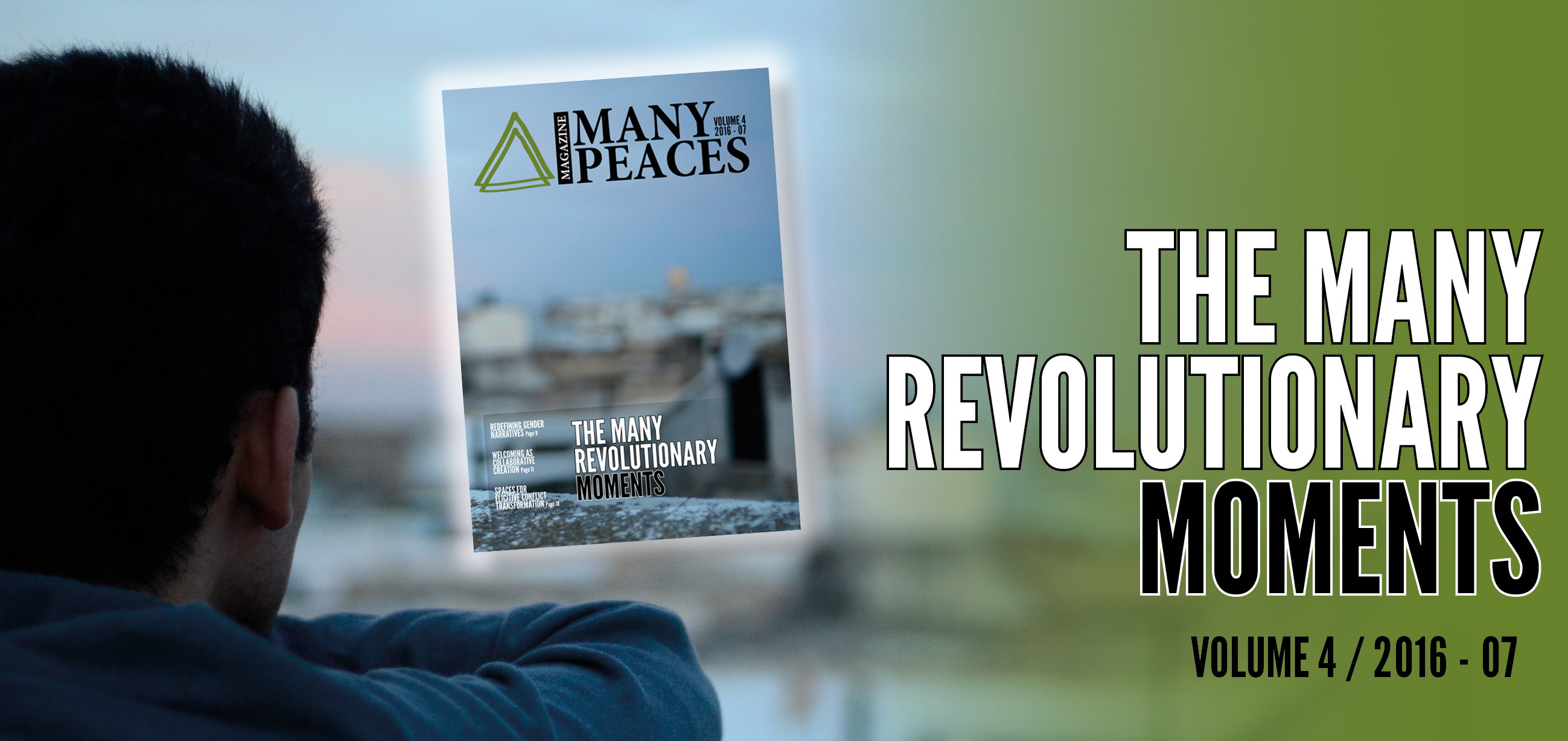Dear peace colleagues and friends,
When I received the invitation to write this greeting note about ‘revolutionary moments’, I became excited, joyful and expectant. What a powerful idea it is to not only think what these moments are, but furthermore how they happen, how they unfold and to dig deeper into their meaning for peace studies.
From such a theme, one could expect a magazine filled with ‘big moments’ in history that tell tales of big events, spectacular peaces and great violence. Yet, that is not the case in this Many Peaces Magazine, which has been founded on the spirit of the multiplicity of many different small, imperfect and transrational peaces that invite a transpersonal, emotional, bodily and spiritual engagement with life – of which revolutions, transformations and change are part and parcel.
It is then not surprising that this new issue is full of that seed which breeds fertility and small gestures of love and cooperation even in the harshest of circumstances. As Julia Metzger-Traber recounts in her article, there has been an increasing number of refugees arriving to Europe in the past years. The ‘welcoming culture’ that she describes is a strong sign by European societies to open their ‘homes’ to newcomers. Besides, Julia goes further and asks about ‘rerooting’ and ‘uprooting’, pointing to the transpersonal and relational grain of this political movement. Julia takes us through a journey of small revolutionary moments, ‘revolutionary’ because in the midst of the ‘big events’ of violence and conflict that surround refugees and migrants, we can decide to open our hearts and look beyond the surface, dig deeper into the epicenter of conflicts and unearth the layers of relationships.
Shibani Pandya takes us in another elicitive conflict transformation journey, one that also cuts through ‘grand narratives’ of rape and gender-based-violence (GBV) to label cultures in India and Singapore as violent and instead listens attentively to aspects of deep culture that might legitimize violent acts, attitudes and behaviors. She does this through unpacking stories and myths present in folklore and other tales. It is a process in which she takes seriously the background, beliefs and concerns of the people in order to work with them through the conflictive energy present in the room. This requires listening with giraffe ears and heart, becoming a facilitator who goes beyond the merely cognitive to also engage compassionately with others.
These are important points that Jannik Gresbrand beautifully recounts in the initiative to create ‘Peace Elicits’, as a place of encounter for elicitive facilitators and researchers to refine their skills. Body-work (that takes one into the transpersonal), collective approaches to learning (that help us live the con-scientia) and regularity of meetings (that keep the fire going in the midst of daily routines) are the principles that have sparked the creation of this group, which we wish the best to flourish, strengthen and transform.
Similar to the network DEEP, of which Jelena Mair tells us in her article, peace workers around the world are getting together to foster empathy, bridge divides and facilitate policy innovation. With an explicit intergenerational approach, DEEP also reminds us of the possibilities that we have to engage from the personal to the collective, to help to contribute as catalyzers of change seeking a larger impact.
These ‘revolutionary moments’ that this issue puts forward seem then to be characterized by instants in which we decide to take a risky step, when ‘getting out of our comfort zone’ is chosen as a lifestyle, to dare to create something that touches others holistically and so, inevitably, we are also transformed by them. Every day we receive constant invitations that call on us to change, to take a leap of faith, and Kilian Kleinschmidt reminds us that ‘revolutionary moments’ begin by accepting that nothing is perfect and that yet we dare to think ahead, innovate, invent and have visions of how things could be differently.
Just like peace, ‘revolutionary moments’ are not just ‘out there’ and reserved for those with whom we work, they are also revolutionary for ourselves. All protagonists of this Magazine, from facilitators to researchers, let us see through the cracks that even their own hearts might break in their work. I would like to believe that this is the real revolution, the shaking up of our own self, when we engage in a conscious exercise of transformation. Transformation as authentic movement requires letting go, trusting the process and believing that the universe is holding us together. This Magazine gives me the hope that this type of revolution is possible. Thank you!

